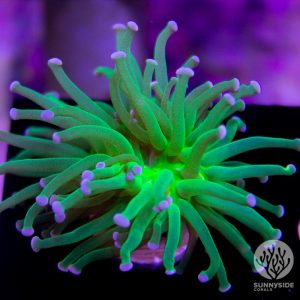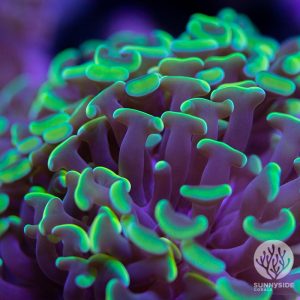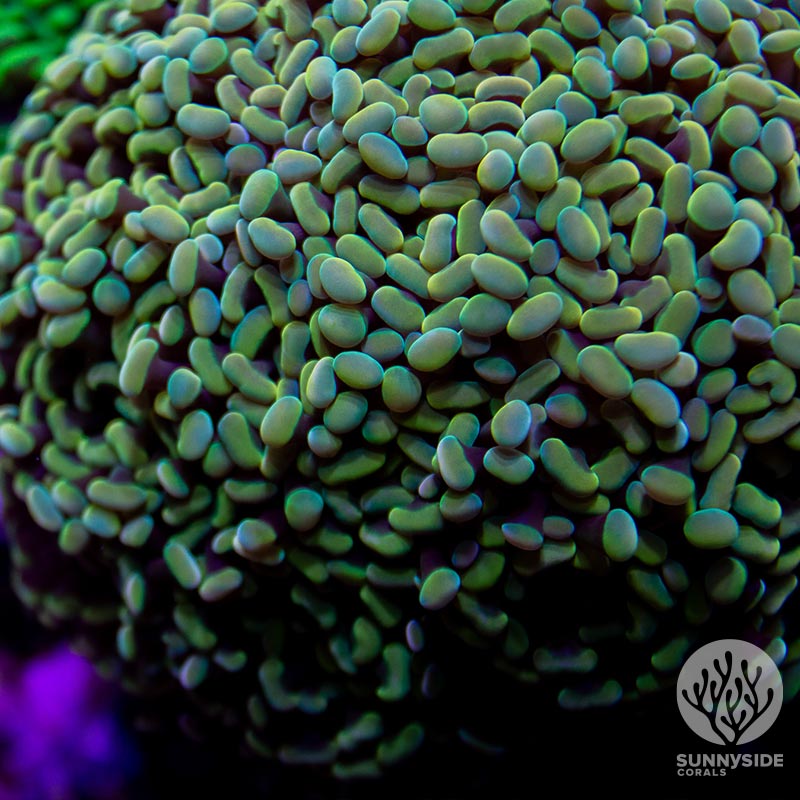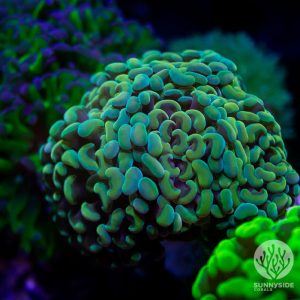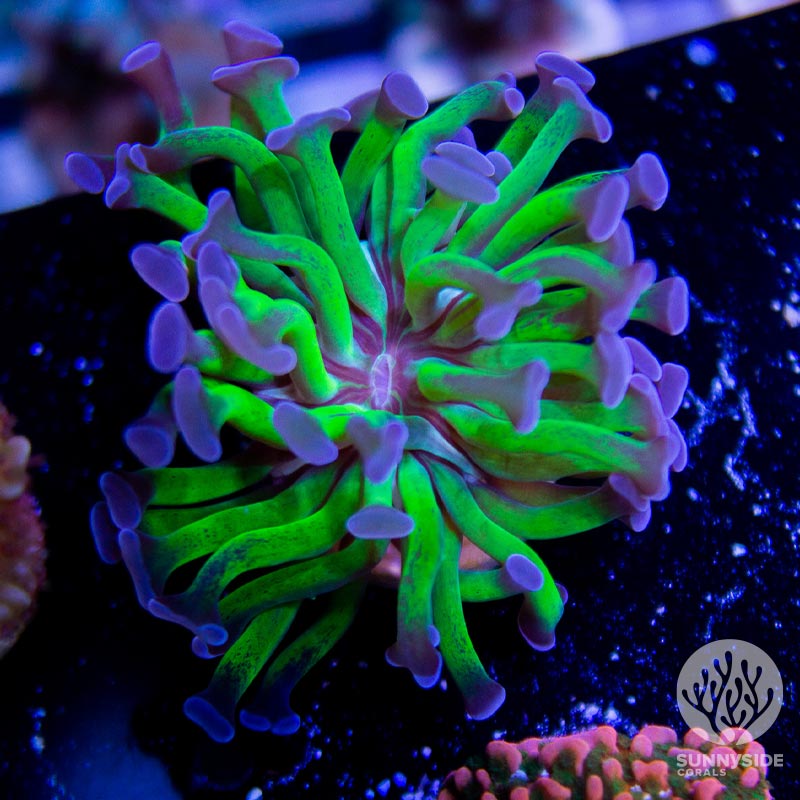What are Euphyllia Corals?
Euphyllia are one of the most popular types of coral in the hobby right now. Not only do they look amazing and add some movement to your tank, they also are fairly easy to take care of. Part of the Large Stony Polyp (LPS) group they have large fleshy tentacles that are always extended with a hard calcified skeletal base. Here are some of the things you need to know to get you started with Euphyllia.
Hammer corals are one of the best corals for any system. They don’t require too much attention and add a nice bit of movement to your tank. They do need their own space in your tank as they can sting other nearby corals. Some of our favorites are the ASD Holy Grail Hammer and our Purple Splatter Tip Hammer.
Torch corals are the king of flowy corals. If you want a coral that is relaxing and adds nice movement to your tank, torches are perfect. Like other euphyllia corals, make sure to give them their space as they will stink anything they touch. Some of our favorites are our Indo Gold Torch and our Blue Tip Indo Gold Torch.
The frogspawn coral can sometimes appear to look very similar to the Hammer Coral. While having the same temperament and growth the obvious difference is the shape of the tip of the coral. Hammers tend to have a hammer-like curve where Frogspawn corals have a more circular tip. Frogspawn also typically have a more loose branching tentacle growth pattern. Both of them are perfect for anyone looking to add a little movement to their tank.
Euphyllia Coral Care: How we manage our systems
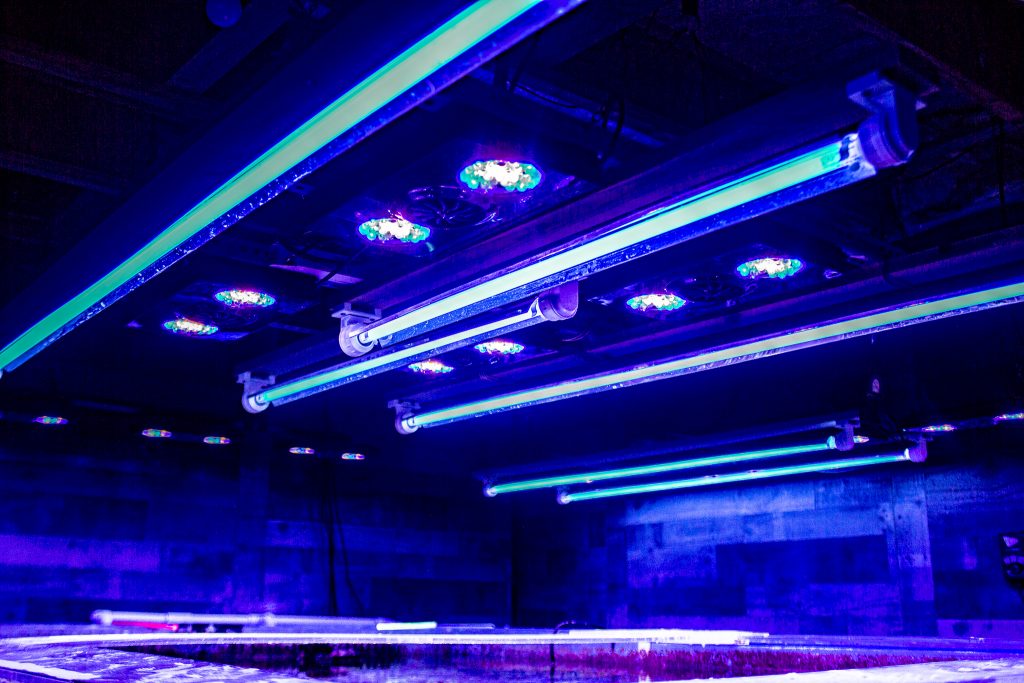
How much light do Euphyllia coral need?
Quality lighting is important for growing Euphyllia and getting good coloration. At Sunnyside Corals, we grow all of our corals under both T-5 lighting and Radions. We run our lighting on a modified AB schedule with our T-5s and Radions. Euphyllia only requires a moderate amount of lighting to grow well. Most lighting will be able to grow Euphyllia well. For more help on lighting, you can see our exact light setup and schedules on our tank lighting post.
Flow Requirements
Euphyllia are perfect for adding movement to your tank as the soft fleshy tentacles move in the flow. You will want to make sure your corals have a decent amount of flow on them but make sure they are not getting blasted directly. Low to moderate amount of flow is just about perfect for most Euphyllia.We run our systems with a mix of MP10 and MP40 pumps. Beware of too much flow as it can cause the polyps of the Euphyllia coral to either stay retracted, or hit the skeleton and cause damage to the coral. You want just enough to allow the polyps to gently flow in the current.
Euphyllia Coral Placement
When placing Euphyllia, you have to be mindful of where you place them. Their long sweeping tentacles will sting and potentially kill other corals near them. Consider that when placing them and think about the water flow near them. Most Euphyllia do well next to similar Euphyllia and often do not have issues with stinging one another. For example, you can place torches next to other torches but will run into problems with a torch blowing into a hammer coral. Frogspawn, Octospawn, and Hammer corals typically don’t sting each other.
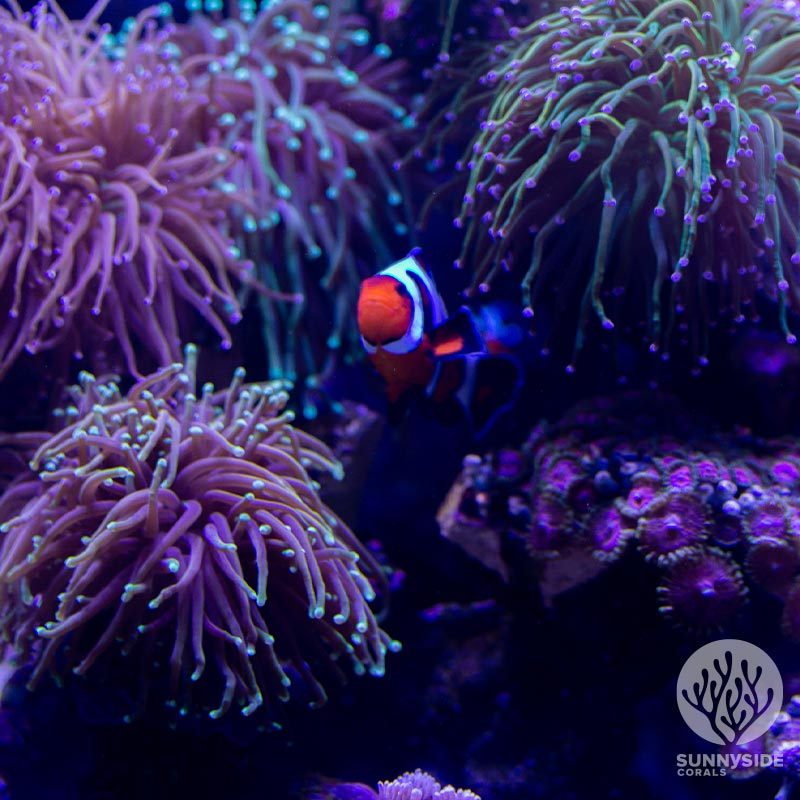
Feeding Euphyllia
Euphyllia are all photosynthetic, meaning feeding is optional. However, like other LPS corals, Euphyllia corals can thrive better when being fed. Due to the size of our systems, we broadcast feed rather than target feed. We use automated pellets to set our baseline and supplement that at random with a variety of frozen foods. Some of those include: LRS reef frenzy frozen food (pe calanus), Hikari (spirulina brine shrimp). We will also use nori and flake food occasionally. There’s no set feeding schedule, but typically we’ll supplement with frozen once a week, then a few days later we might use powder, and then a few days laters do flakes/ nori. Occasionally we also dose with aminos. All of this is based on our current algae levels. If algae levels are high then you are overfeeding.
Water Parameters
Water parameters are always a key part of growing any coral. Like other LPS corals, you will want to make sure the Calcium and Alkalinity levels are always stable in your tank. The skeletal base of the coral is formed by consuming Calcium and Alkalinity. Euphyllia also do well in slightly higher nutrient systems with slightly elevated Phosphate and Nitrate levels. Our higher nutrient system is a smaller system, fed by a KALK reservoir with a peristaltic pump that is a consistent dose separate from the auto top off. Dose MAG separately with a doser. Our levels are kept at the following:
ALK: 9
CAL: 420
MAG: 1400
Salinity: 1.025
Everything in our systems is very standard. We aim to keep the levels standard, feed a wide variety of foods, and don’t use special additives. We believe this allows for the biggest margin of success for all the corals and helps when people are transferring our corals to their own systems.
How to increase Growth
The key to increasing growth in your tank is to make sure your tank is consistent. Once you find a spot in your tank where your corals are happy, don’t move them. If you keep your parameters consistent and have adequate light and flow, your corals will start to thrive. Start with lower flow and lighting and gradually increase as you feel necessary. You can often color up a coral by increasing lighting to a point. If you increase too much, you could bleach or even kill the coral so adjust slowly and be intentional about your changes.
Things to Know Before You Buy Euphyllia:
Euphyllia are a great coral for anyone looking to add movement and color to your tank. They can be an easier coral to keep happy but as all coral, they do require some stability. As technology advances, maintaining a healthy tank is increasingly easy. Once you get your system running smoothly and it’s stable you can grow Euphyllia fairly easily. Things like dosers, calcium reactors, and other automated tools have made keeping Euphyllia a lot easier but may not be necessary. The nicest thing about Euphyllia coral, is they can be largely hands off. If your tank is relatively stable and your coral is placed in a good spot, they should grow well for you.
Other important factors that play a role in the success of growing Euphyllia is the correct amount of lighting and flow. At Sunnyside Corals, we run a modified AB schedule with Gen 4 radions and supplement T-5 lighting on all our corals. They grow best under a medium amount of light. No one size fits all with all types of Euphyllia so make sure you do your research before placing.
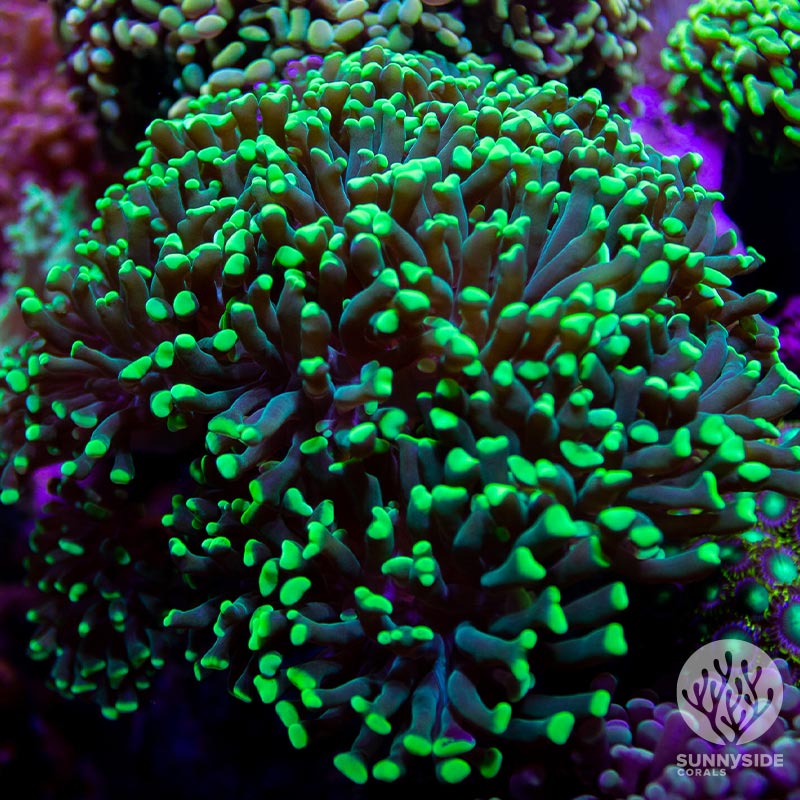
When can I add Euphyllia to my tank?
Like most LPS corals, Euphyllia can be a great coral to put in a somewhat newer tank. They can be fairly resilient but should not be your first coral in your tank. Euphyllia might be able to survive in a newer tank but might not grow much until your tank parameters are steady and there is less fluctuation.
Dry Rock
If you started your tank with dry rock you will most likely have to wait close to 6 months to a year before you will be able to successfully keep anything alive. This is because dry rock can leach phosphate into the water for a very long time. As all coral, Euphyllia will do best in a more established tank but they are a good option when initially adding coral slowly to your tank.
Live Rock
If you started your tank with live rock that process can be dramatically shorter. However, be aware that just because your levels are where they should be does not mean that your tank is actually ready for any corals. We recommend introducing LPS or Soft corals first with any new system. One of our beginner corals would be a great first coral to test your tank with. After having success with soft corals, you might start to think about adding Euphyllia and other LPS corals to your tank. SPS corals should be the last thing that you add to your tank.
